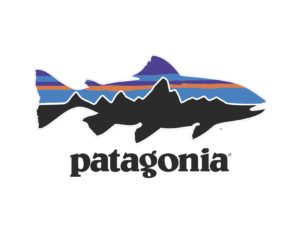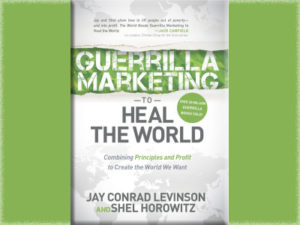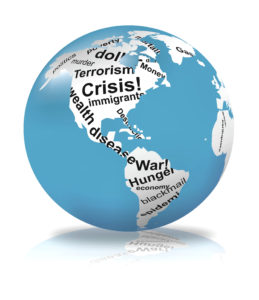Environmental Consciousness in Portugal
After a wonderful week visiting four cities in Portugal, I noticed a lot about the state of green consciousness there. Obviously, visiting only four of hundreds of communities is only a sampler, but certainly enough to share with you.
Renewable Energy
For such a sunny country, Portugal has remarkably empty rooftops. We saw a few dozen photovoltaic arrays, mostly just a two to five panels and maybe two or three larger installations. And hardly any roofs had solar hot water heaters, even though other sunny countries, like Israel, have them on practically every house and they’re far less expensive than PV, with very quick payback.

We passed one wind farm, and a few installations with a turbine or two. I didn’t see any hydro or geothermal facilities, but we weren’t in the mountains where they’d be more likely to be built.
Overall, Portugal appears to be trailing in this area. But appearances can be deceiving. In 2016, an astounding 58 percent of Portugal’s electricity generation and 27.2 percent of overall energy was renewable—and those ranges are typical of the past several years. For four days in a row in May 2016, the country generated all of its electricity renewably. The country has also invested heavily in wind and solar farms and even opened (and then quickly closed) the first commercial ocean-wave energy capture facility in Europe.
Recycling
Trash sorting stations for metal/plastic, paper/cardboard, glass, and undifferentiated (the world looks a lot like “indifferent”) were very common in Sintra (where they were enormous and hard to miss), and somewhat more sporadically—and in smaller bins—in Lisbon, Porto, and Aveiro.
In places, litter is a problem, especially around the edges of some of the plazas and parks.
Green Food Movement
It was easy to get vegetarian options in every city we visited. All of them also have a small natural foods community with places to get organic, vegan, gluten-free, and other options. In two cities, we stayed with families, and both served us farm-fresh eggs (one from their own chickens). For every vegan cafe, there are hundreds of traditional cafes and restaurants serving almost entirely meat or fish or seafood, but there would usually be one or two vegetarian options such as an omelette or a baguette with cheese. Artisanal cheeses are commonplace (and scrumptious). Choices are much more limited for vegans.
Some of the more artisanal vineyards and port wine cellars use organic grapes—and in fact we’ve enjoyed organic Portuguese wine in the US for several years, particularly the vinho verde, young, “green” wine. In-country, we sampled a number of wines and were especially impressed by some of the reds.
Fruits were often amazingly delicious, and fresh-squeezed orange juice (sumo laranja) is available almost anywhere. Many natural food cafes and smoothie bars will also juice carrots, mangos, and other fruits and vegetables, to order.
Transit
In Lisbon and Porto, it was possible to get most places via metro, bus, antique tram, modern tram, or funicular, and both cities have at least three intercity train stations (including the one across the river from Porto in Vila Nova del Gaia). Transit was inexpensive. Taxis were also inexpensive, and tuk-tuks were available as well. Car-sharing networks exist but don’t seem heavily used.
The small communities of Aveiro and Sintra were much less well served. Most of central Aveiro is built along canals, and there are plenty of boats, but more for sightseeing than actually getting someplace. There’s a nice bike path going from town to both halves of the university. Sintra has frequent commuter rail service to Lisbon, Queluz, and several other towns along its one rail line. Sintra had local buses serving the downtown area, hop-on/hop-off service to the palaces and parks from at least three companies, and rather poor service to the outlying areas.
Open Space
Every community we visited had lots of parkland, public plazas, and nearby farms. Sintra is particularly phenomenal, with vast and magnificent nature reserves in and surrounding the town. Three of the four (Lisbon, Aveiro, and Porto) had active waterfronts with good public access, and Aveiro had public salt marshes. High marks on this one.
Overall Environmental/Climate Change Consciousness
Several times, when someone realized we were from the US, the other person would bring up the presidential decision a few days before our visit to exit the Paris Climate Accord, signed by 193 countries including the US. This decision is seen as a disaster in Portugal. We did not meet a single person who supported it—and our president is seen as either a madman or a laughingstock. This survey was based only on those who started conversations with us, but it was consistent. Not one person who started these conversations had anything good to say about the new US regime.
Interest in eating organic and natural foods seems to be rising rapidly.
Small cars are still extremely dominant, as was true in most of Europe until about 20 years ago. There are surprisingly few motorscooters and motorcycles, and even fewer bicycles—but you see almost no large cars. I saw two Jeeps (one small, one larger) and one Hummer. Most everything else was no bigger (and often a lot smaller) than a Toyota Corolla. This may be based in economics as much as environmental awareness, or even just a reaction to the narrow streets in all the historic sections—or it may have to do with carbon consciousness. Almost all the cars have manual shifts, which is no longer true in other European cities we’ve visited in the past decade. Of the cars I happened to look into, only one (the big Jeep Wagoneer) had an automatic.
Urban architecture is primarily row houses, which are energy-efficient because they have fewer outside walls. In the few houses we entered, the appliances seemed pretty large. Portugal clearly values historic preservation, though many of the buildings are only 100-130 years old, but look centuries older.
Water-saving dual-mode toilets were very common, though there were still plenty of single-mode ones.
In short, Portugal is moving nicely along with the rest of its European Union neighbors on the full range of green issues, even though it’s one of the poorer countries in the federation.







